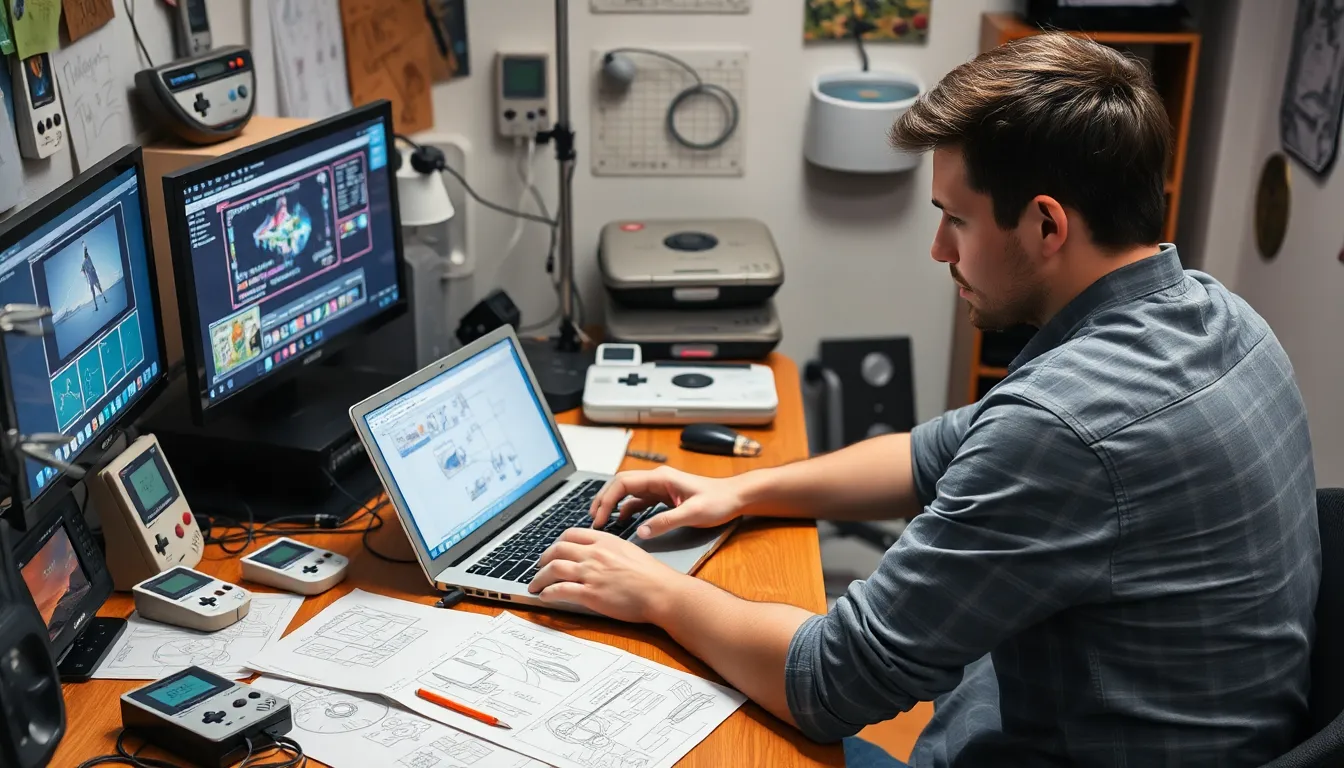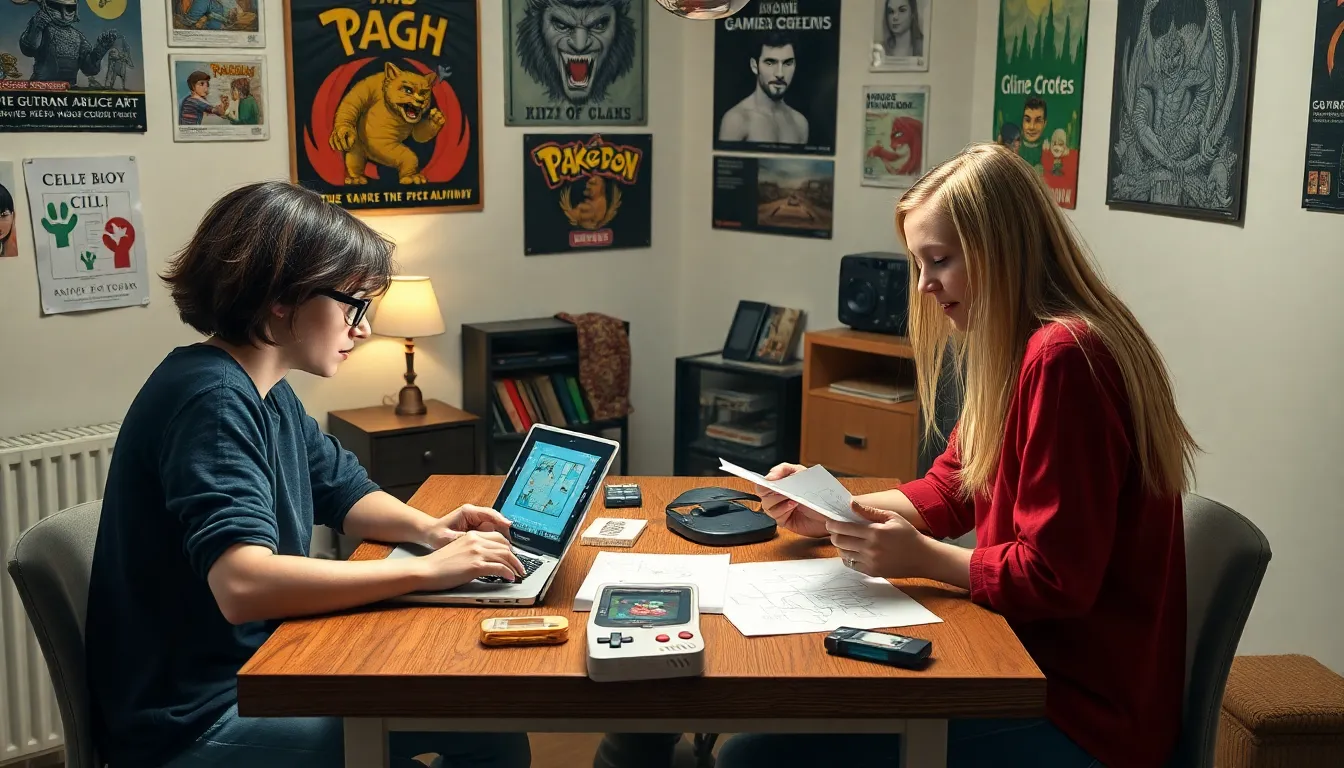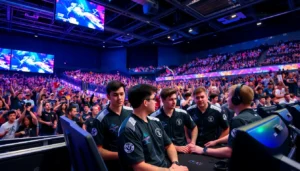Table of Contents
ToggleIn the pixelated paradise of the Game Boy era, creativity knew no bounds. Game Boy game prototyping isn’t just a nostalgic trip down memory lane; it’s a wild ride through innovation and imagination. Picture this: a world where 8-bit dreams come to life with a few keystrokes and a sprinkle of genius.
Overview of Game Boy Game Prototyping
Game Boy game prototyping represents a key phase in the development of handheld gaming. Developers harnessed simple tools and creative ideas to forge experiences that captivated players. Innovative concepts emerged, allowing programmers to test gameplay mechanics before finalizing designs.
Rapid iteration became essential, with teams commonly using platforms such as Game Maker or assembly language. Early prototypes often featured basic graphics and sound, focusing on gameplay rather than aesthetics. This emphasis on core mechanics reflected the era’s priorities, where game functionality took center stage.
Teams relied on shared resources and exchange of ideas to push boundaries. Feedback during the prototyping phase played a crucial role, enabling developers to refine their concepts based on player interactions.
Small development teams facilitated collaboration, which led to a faster turnaround on prototypes. Testing sessions with peers or focus groups generated valuable insights. Developers quickly learned online forums and bulletin boards enhanced communication, promoting a vibrant community.
Understanding the limitations of the Game Boy’s hardware shaped the prototyping approach. Memory constraints necessitated creative solutions, leading to innovative designs that optimized resource utilization. Output often involved balancing performance and gameplay depth to maintain player engagement.
During this period, notable titles began as humble prototypes, eventually evolving into iconic games that defined a generation. These early experiments reveal an intricate dance between creativity and technicality, establishing a legacy within the gaming industry that still resonates today.
Importance of Prototyping in Game Development

Prototyping serves as a crucial phase in game development. It emphasizes the balance between creativity and technical constraints, especially during the Game Boy era.
Rapid Iteration and Testing
Prototyping relies heavily on rapid iteration and effective testing. Developers utilized simple tools like Game Maker and assembly language, enabling quick checks of gameplay mechanics. Testing sessions allowed teams to understand gameplay flow promptly. Immediate feedback from these sessions facilitated adjustments in real-time. Key focuses centered on core gameplay functionality instead of aesthetics. This focus promoted a streamlined development process, essential for the limited hardware capabilities of the Game Boy. Iterative cycles fostered innovation, inviting new ideas regularly. Engaging in testing ensured that early prototypes developed into captivating experiences.
Feedback and Refinement
Feedback collection proved vital for the enhancement of game prototypes. Small development teams actively sought input from peers and online communities. This exchange of ideas enriched the design process significantly. Insights derived from player testing highlighted necessary refinements, ensuring gameplay remained engaging. Iterating based on feedback allowed developers to address potential issues effectively. Many prototypes underwent several revisions before reaching a polished state. Refinement cycles strengthened both gameplay depth and performance, adapting to the technological constraints of the Game Boy. Engaging with a community of players shaped many iconic titles, illustrating the importance of collaboration.
Tools for Game Boy Game Prototyping
Prototyping for Game Boy games requires a combination of software and hardware tools tailored to the platform’s specific needs.
Software Options
Popular software for Game Boy game prototyping includes Game Maker and BGB. Game Maker provides a user-friendly interface, enabling rapid prototype development without extensive coding skills. BGB stands out as an excellent emulator, allowing developers to test their games accurately. Other tools like RGBDS facilitate assembly language programming, crucial for performance optimization. Additionally, pixel art software such as Aseprite serves designers in creating detailed sprites essential for the visual appeal of games. Each of these options contributes to the seamless development of engaging game experiences.
Hardware Considerations
Considering hardware is vital for Game Boy game prototyping. Authentic Game Boy devices provide real-time feedback and performance testing. Testing on actual consoles helps identify hardware limitations and optimizes gameplay. Emulators, while convenient, can sometimes differ from real hardware performance. Developers often integrate flash cartridges for convenient testing on physical consoles. These cartridges streamline the process, allowing for quick gameplay sessions that showcase the game’s mechanics. Each hardware choice impacts the overall development strategy, shaping the final gaming experience.
Techniques for Effective Prototyping
Effective prototyping techniques play a crucial role in developing engaging Game Boy games. These methods ensure that ideas transform into playable experiences quickly and efficiently.
Paper Prototyping
Paper prototyping involves creating tangible representations of game mechanics using paper, pencils, and simple materials. Designers sketch layouts, menus, and character designs to visualize gameplay. This technique allows for rapid iterations and immediate adjustments based on feedback. During playtesting sessions, participants engage with the paper prototype, providing insights into user experience and interaction. Adaptations may occur swiftly, reducing time spent on coding during early stages. By focusing on gameplay flow, developers can prioritize core mechanics without the constraints of programming.
Digital Prototyping
Digital prototyping utilizes software tools to build initial game concepts. Developers often employ platforms like Game Maker for creating digital versions of their ideas, streamlining the process. Digital prototypes facilitate the integration of audio, graphics, and animations, providing a more immersive preview. Early-stage testing becomes possible, allowing for immediate evaluation of gameplay mechanics. Collaboration with team members and external testers enhances the feedback loop, enabling teams to refine prototypes more efficiently. Decisions based on player interactions lead to improved designs and better alignment with gameplay goals. By leveraging technology, developers enhance the prototyping experience, fostering innovation in game design.
Challenges in Game Boy Game Prototyping
Prototyping for the Game Boy presents unique challenges, primarily grounded in technical limitations and design constraints. Developers navigate these hurdles while striving to create superior gaming experiences.
Technical Limitations
Programming for the Game Boy requires understanding specific hardware restrictions. The system’s CPU, an 8-bit Sharp LR35902, limits processing speed and memory size. Developers often face challenges in optimizing code to ensure smooth gameplay. These constraints impede intricate graphics or complex calculations, demanding creative solutions. Limiting factors such as screen resolution and color palette impact visual storytelling and gameplay design. It’s crucial for teams to devise clever ways to maximize the system’s capabilities. Through thorough testing and iteration, they manage to delivery engaging content within these technical boundaries.
Design Constraints
Designing games for the Game Boy necessitates addressing multiple constraints. Screen size influences user interface layout and visual clarity. Developers focus on clear, functional designs to ensure accessibility and ease of play. Limited audio capabilities restrict sound effects and music composition, requiring innovative approaches for audio representation. Developers prioritize impactful sound design despite these restrictions. Game mechanics must also engage players while operating within these design restrictions. Effective use of simple controls and intuitive gameplay emerges from the focus on an enjoyable experience, proving essential for player retention. Each game’s success hinges on the balance between creativity and these inherent design challenges.
The journey of Game Boy game prototyping reveals a vibrant tapestry of creativity and innovation. Developers embraced the limitations of the hardware to craft memorable experiences that still resonate today. The collaborative spirit among teams and the feedback from players played pivotal roles in shaping iconic titles.
By utilizing tools like Game Maker and engaging in both paper and digital prototyping, they navigated technical challenges to refine their concepts. This process not only honed gameplay mechanics but also fostered a deeper connection with the gaming community. Ultimately, the legacy of Game Boy prototyping serves as a testament to the power of imagination in overcoming obstacles and creating beloved games that endure through time.




